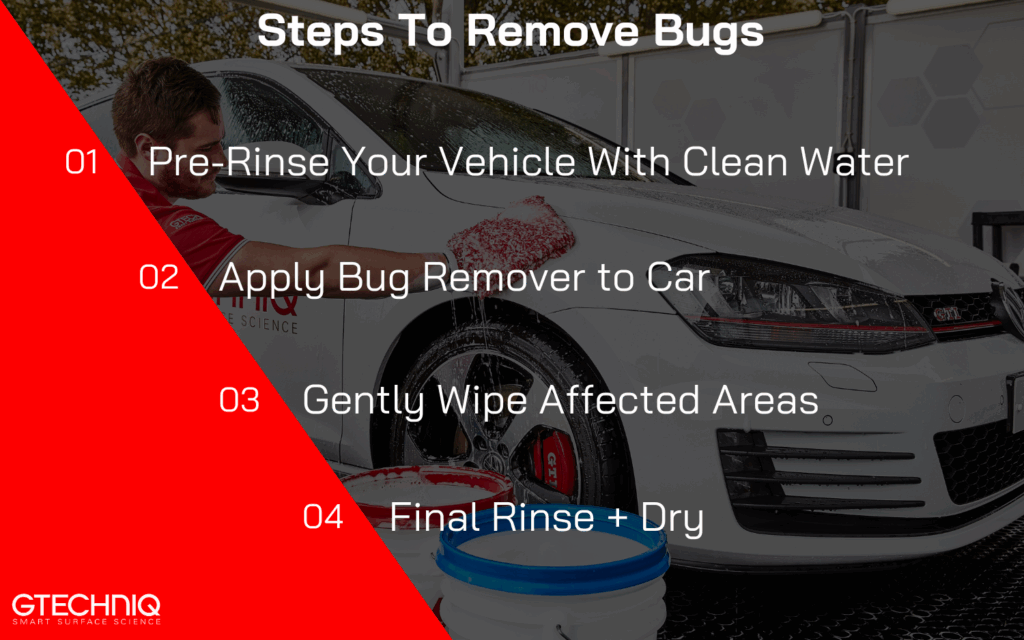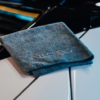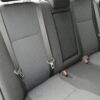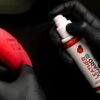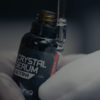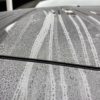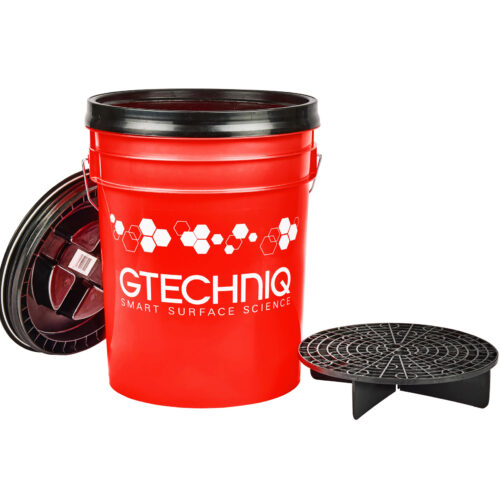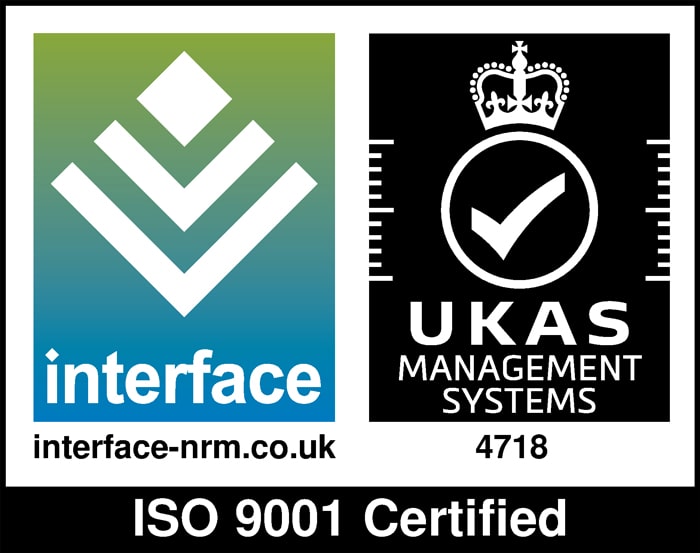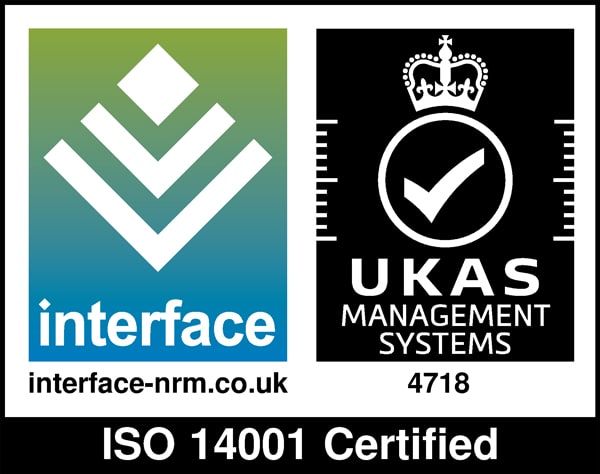After a long drive (or even a short one in the summertime), you might step out of the car to find bugs splattered across your front bumper, hood, and windshield. While it looks like a simple cosmetic issue, it’s a bit more complex than that; bug guts can quickly eat into your vehicle’s paint finish and clear coat because of their pH levels, leaving behind stains and even permanent damage if not addressed properly. Bird droppings, tree sap, and road grime create similar risks, etching into surfaces and breaking down protective layers (you can learn more about tackling those contaminants in this guide we wrote).
With the right bug removal techniques and products, you can protect your car’s paint, maintain its shine, and make future cleanups easier.
Supplies & Prep: What You’ll Need for Safe Bug Removal
To safely remove bugs without damaging your car’s paint, you’ll want to opt for professional-grade supplies designed for exterior surfaces. Here’s what to keep on hand:
Here’s what to keep on hand:
- Bug remover: Special-purpose cleaners, like W8 Bug Remover, contain active ingredients designed to break down bug squash without harming your clear coat. Look for formulas that soften residues for easy wiping.
- Spray bottle: Useful for applying water or ph neutral soap like Gtechniq GWash across your car’s surface.
- Microfiber cloths: Soft, absorbent materials that safely lift away contaminants without scratching painted surfaces.
- Wash mitt: Ideal for applying car wash solutions gently over large exterior surfaces.
- Quick Detailer: The perfect waterless wash for fast touch-ups when bug guts or bird dropping stains are fresh.
Note: Homemade “hacks” like dryer sheets, baking soda, hydrogen peroxide, or other chemical sprays can strip your coat or scratch painted surfaces. Using specialty cleaners ensures safe, effective results.
The Step-by-Step Process
Step 1: Prep the Vehicle
Start by rinsing your vehicle. This helps loosen dead bugs and road grime. If water access is limited, a waterless wash is a great option.
Step 2: Apply Your Bug Remover
Use a spray bottle to apply a bug remover or quick detailer directly to the bug guts. Let it dwell (time varies by product; for W8, we recommend 3-5 minutes), but do not let it dry. This softens stubborn bug stains and helps you prevent scratching surfaces. Repeat if necessary.
For heavily contaminated spots, using a purpose-built product like our W8 Bug Remover makes all the difference.
Step 3: Gently Agitate and Wipe Down
Use a microfiber towel to gently wipe away the softened material. Work in straight lines rather than circles to protect your finish. This is only recommended for stubborn bug stains. Otherwise, the bugs should just be rinsed away.
Avoid aggressive scrubbing – bug removal is done best when you rely on your cleaner, not elbow grease. If you encounter any stubborn spots, reapply the bug cleaner and repeat the process to protect from micro-scratches.
Step 4: Finish with Protection
Once the bug splatter is gone, rinse or wipe down the area, or give it a full wash using a gentle solution using a mitt and/or microfiber cloths. This helps remove any lingering residue.
Follow up with a ceramic sealant to refresh the paint finish and add a slick protective layer to exterior surfaces.
Routine Maintenance: Keeping Bugs from Taking Over
Consistent care is the best way to keep bugs from damaging your car’s paint. Here are a few expert tips:
- Wash regularly: A weekly car wash or waterless wash keeps bug guts, tree sap, and bird droppings from etching into the paint finish.
- Don’t let them sit: Bug removal is always easier before the stains bake onto painted surfaces. Carry a spray bottle of bug remover or quick detailer and a microfiber towel in your trunk. After a long mile drive, treat the contaminants right away.
- Focus on high-impact areas: The front bumper, headlights, and side mirrors catch a lot of bugs – pay extra attention to these spots.
Prevention: Protective Coatings & Long-Term Care
The smartest strategy is making sure they don’t stick in the first place. Protective coatings create a shield over your vehicle’s paint finish and clear coat, reducing the likelihood of stubborn bug stains.
- Ceramic coatings: Hydrophobic layers repel water, bug guts, tree sap, and bird droppings, making them easier to wipe off.
- Ceramic sealants: Add another line of defense against permanent damage from bug squash and road grime.
- How our products help: Engineered for exterior and interior surfaces, Gtechniq products outperform generic and even specialty cleaners by providing long-term durability and protection backed by science.
Plus, a protective coating means you:
- Spend less time scrubbing dead bugs.
- Reduce the risk of stubborn bug stains.
- Get a glossier, longer-lasting paint finish.
Cleaner Cars, Lasting Protection
Cleaning bugs off your car is a lot easier with the right tools; the bug remover, microfiber cloths, wash mitts, and detailing sprays you choose safely eliminate contaminants without damaging your car’s surfaces.
Maintenance like routine car washes or spot-cleaning problem areas (like your front bumper), makes bug removal simple. For true long-term care, protective coatings make a big difference in preventing permanent damage.
Protect your paint, avoid stubborn stains, and enjoy the satisfaction of a flawless finish with Gtechniq.
FAQs
Does bug remover damage car paint?
No, a high-quality bug remover is safe for your vehicle’s paint finish and clear coat when used as directed. Avoid harsh chemicals or abrasive cleaning tools, these can strip protective layers and cause scratches.
How soon should I clean bugs off my car?
It’s best to remove bug guts and bug splatter as soon as possible. The acids in bug guts can eat into painted surfaces within hours, causing permanent damage if left untreated.
Can I use Quick Detailer for bug removal?
Technically, yes, Quick Detailer works for fresh bug splatter or bird droppings. We recommend using a specialized bug remover, then following up with a detailing spray.
What’s the difference between bug remover and a waterless wash?
A bug remover is specifically designed to break down stubborn bug squash and stains. A waterless wash is a great option for quick cleanups or light surface cleaning, but it may not effectively handle heavier, persistent bug stains.
How can I prevent bugs from sticking to my car?
Applying protective coatings makes it harder for bug guts, tree sap, and bird droppings to bond to exterior surfaces. This makes future bug removal faster and safer.
Can bug guts actually damage my car?
Yes, especially if not addressed promptly. In general, the higher the pH, the more corrosive the residue, which can damage your vehicle’s clear coat and paint over time, though acidity levels vary by insect.

